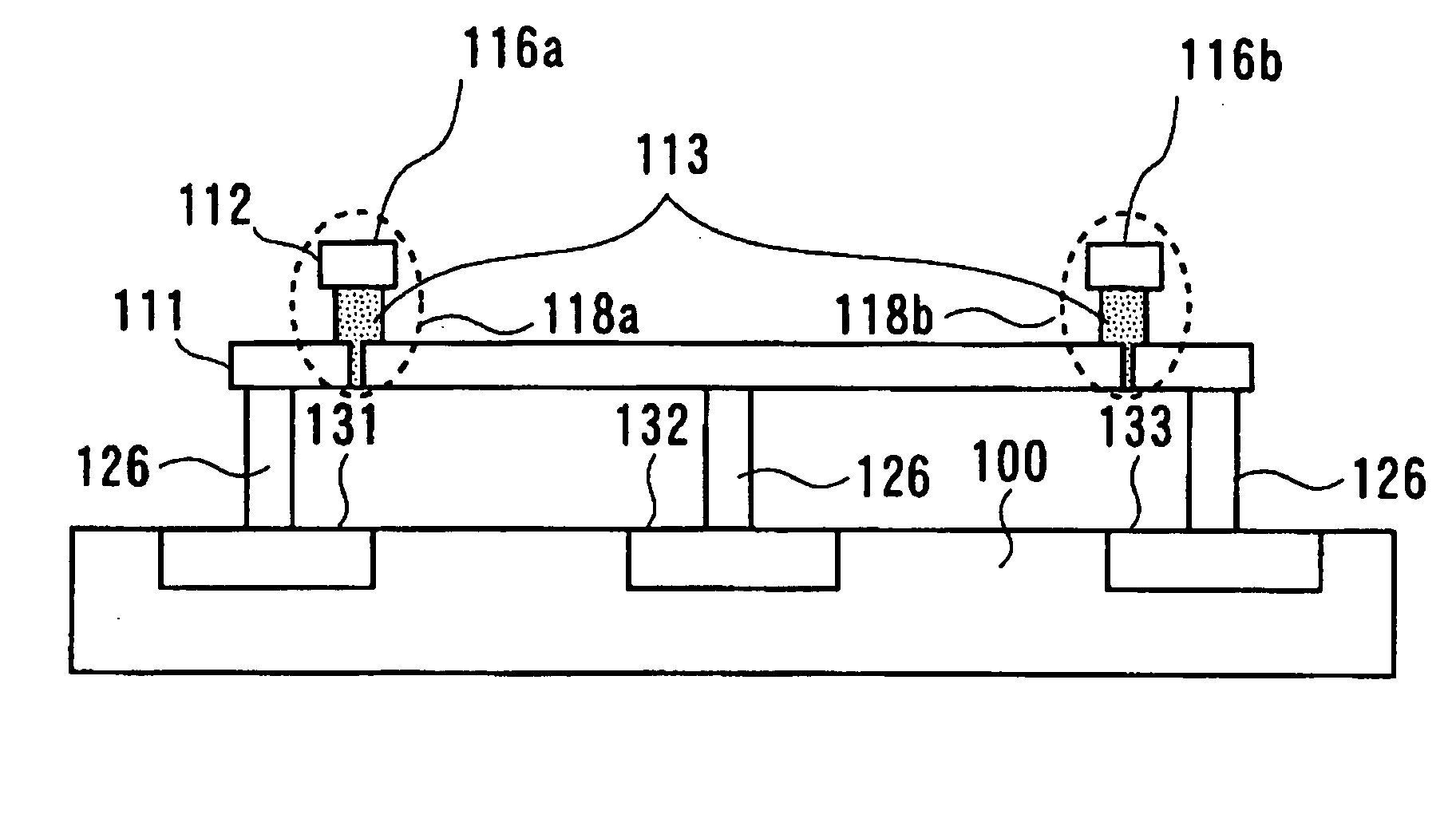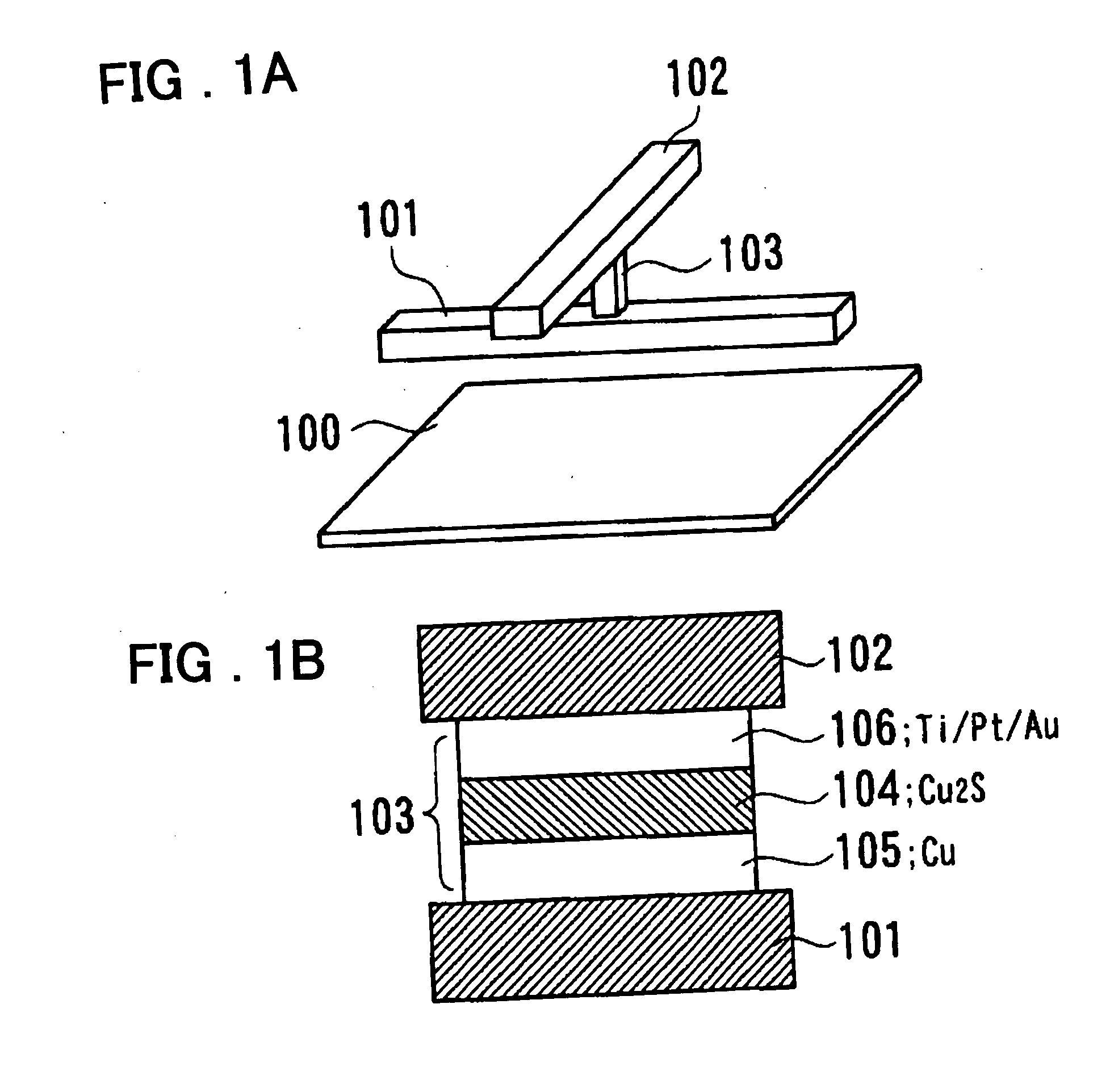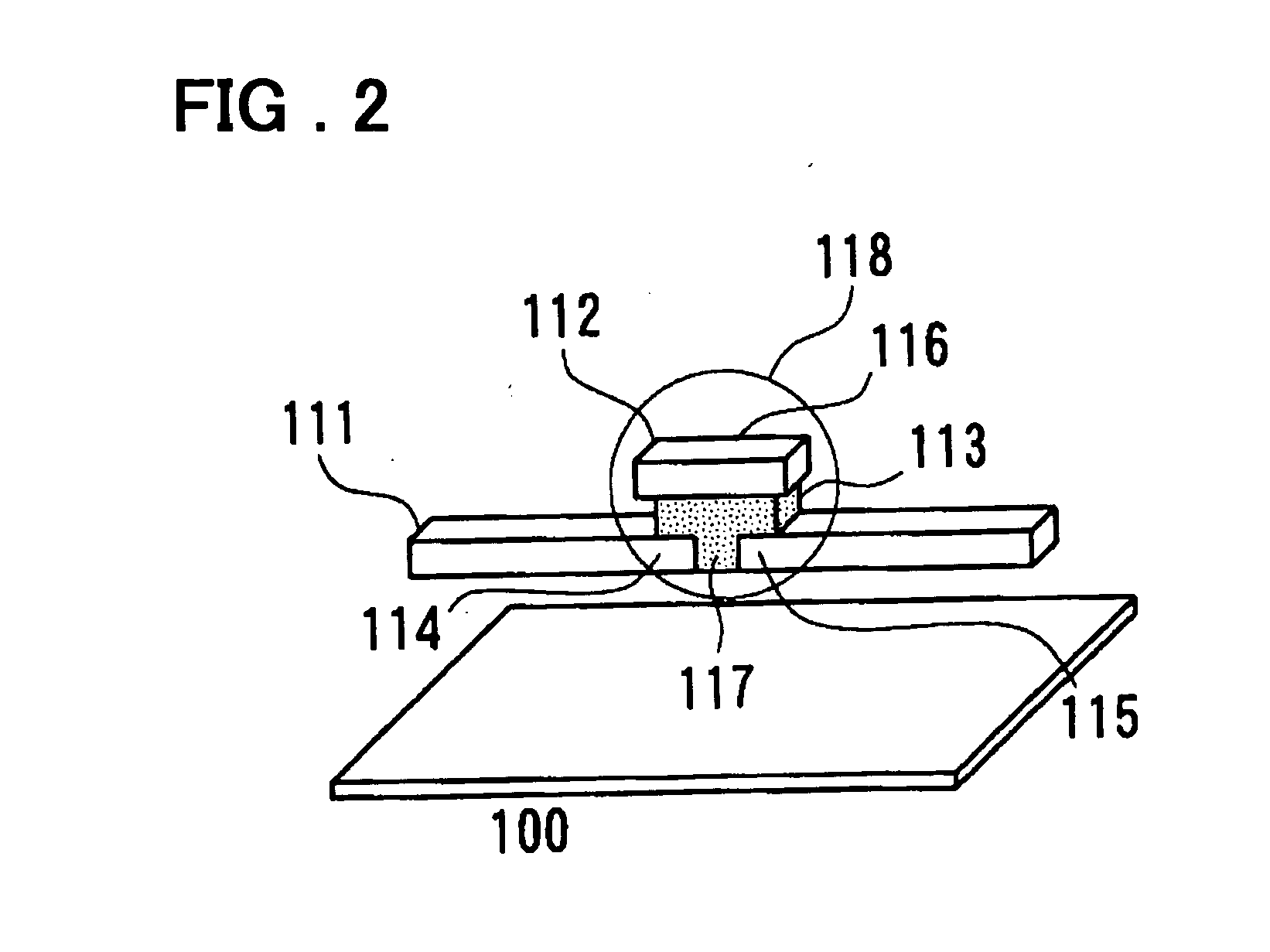Semiconductor device
a technology of semiconductor devices and semiconductors, applied in the field of semiconductor devices, can solve the problems of increasing the probability of design failure, increasing the cost of masks, and re-designing interconnection patterns or mask formulations, so as to reduce the cost, reduce the chip area, and high the effect of logic circuit utilization efficiency
- Summary
- Abstract
- Description
- Claims
- Application Information
AI Technical Summary
Benefits of technology
Problems solved by technology
Method used
Image
Examples
embodiments
[0113] The embodiments of the present invention, in which the switch element according to the present invention, explained in the above preferred embodiment, has been applied to a programmable logic circuit and to a memory circuit, are now explained with reference to the drawings.
[0114]FIG. 5 shows the structure of an embodiment of a programmable logic circuit of the present invention, employing a switch element of the present invention.
[0115] Referring to FIG. 5, a semiconductor integrated circuit of the present embodiment includes a plural number of input terminals 150, a selector circuit 151, a plural number of switch elements 152, a sense circuit 152, a sense circuit 153, and an output terminal 154. The switch elements 152 are each formed by the via 103, shown in FIGS. 1 and 3, or by the switch element 118, shown in FIGS. 2 and 4, formed in an interconnection layer, and the electrical conductivity across two terminals thereof may be changed.
[0116] The selector circuit 151 com...
PUM
 Login to View More
Login to View More Abstract
Description
Claims
Application Information
 Login to View More
Login to View More - R&D
- Intellectual Property
- Life Sciences
- Materials
- Tech Scout
- Unparalleled Data Quality
- Higher Quality Content
- 60% Fewer Hallucinations
Browse by: Latest US Patents, China's latest patents, Technical Efficacy Thesaurus, Application Domain, Technology Topic, Popular Technical Reports.
© 2025 PatSnap. All rights reserved.Legal|Privacy policy|Modern Slavery Act Transparency Statement|Sitemap|About US| Contact US: help@patsnap.com



